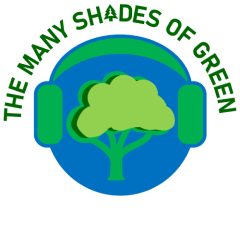Joni Mitchell’s Big Yellow Taxi is a commentary on the way humans are treating Mother Earth. The song critiques the destructive practices of consumerism and industrialization, such as the use of DDT and deforestation and its core message is a warning against the destruction of the natural world and the consequences of unchecked development. The lyrics “They paved paradise and put up a parking lot” encapsulate this theme, highlighting the replacement of natural beauty with concrete and infrastructure. We are in the 25th year of the 21st century and we are not heeding the warnings of climate change as we continue destroying the land, the air and the water with little care and indifference. We over fertilize and spray pesticides on our property without any forethought as to how it affects wildlife and pollinators, as well as the health of our children, our pets and ourselves. How we treat our lawns is parallel to how we treat the planet.
So let’s rethink the idea of a “perfect lawn.” What if the perfect lawn isn’t green, mowed, and sterile, but buzzing with life, color, and purpose? That big stretch of turf grass isn’t as green, environmentally speaking, as it looks. Rethinking our lawns isn’t just about aesthetics — it’s about restoring balance. When we trade a bit of turf for native plants, we create space for life to thrive again, and we become stewards, not just homeowners. Today, we’re talking about why it’s time to rethink our lawns, and how replacing just a portion of that grass with native plants can lead to big benefits for you and the planet. The U.S. is home to over 40 million acres of lawn, more than we devote to any irrigated crop. That’s a lot of mowing, watering, and fertilizing. Lawns might look neat, but they’re ecological deserts. They don’t provide food or shelter for wildlife. They guzzle water, especially in places where water is already scarce, and they often need chemical fertilizers and pesticides that run off into our waterways. The amount of mowing is astronomical! Gas-powered lawn equipment is a big source of carbon emissions and air pollution. We want people to join the Less Lawn More Life Challenge which is free, and on this episode we talk to June Boyle, who is the Project Lead for the national Less Lawn More Life Challenge. We delve into the LLML movement, discuss the WildR score, touch on Doug Tallamy’s Home Grown National Park, Plan It Wild and more. June’s journey into native plant advocacy began as a participant in the first Less Lawn More Life challenge three years ago. What started as a desire to learn evolved into deep involvement with the campaign’s growth from a small Westchester County competition to a national movement. June strives to help everyday rewilders make meaningful changes in their own backyards. June is a member of New Castle’s Conservation Board and lives on a former horse farm dating back to 1770, where she continues to transform her landscape one native plant at a time – battling 255 years of non-native plantings in the process. In addition to her work with LLML, June is the President of Cerco Consulting, where she specializes in strategic communications and organizational effectiveness.
For more information go to https://www.lesslawnmorelife.com/ and check out Plan It Wild https://www.planitwild.com/ also check out https://homegrownnationalpark.org/
Please go to the following organizations to get info and if you can, donate to https://www.ucs.org/ (Union of Concerned Scientists which helps scientists continue their valuable work). If you want to help protect the environment please donate to https://earthjustice.org/ You can also donate to help lawyers defend our constitution by going to https://www.aclu.org and https://www.brennancenter.org/ The Brennan Center helps protect voting rights. Also check out civ.works/defend
To listen to past TMSOG shows go to: https://hudsonriverradio.com/ and https://malcolmpresents.com Follow The Many Shades of Green on FB, Threads and Instagram @tmshadesofgreen and on Blue Sky @tmshadesofgreen.bsky.social. Listen to TMSOG podcasts on all major podcast apps.#RaiseYourEco&SocialConsciousness
A Special shout out to Neil Richter for all of his help and engineering wizardry in getting TMSOG up and running each week.
